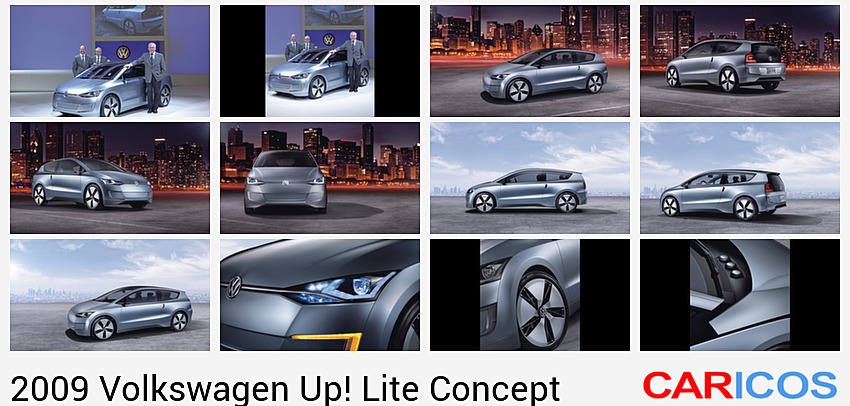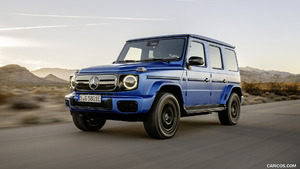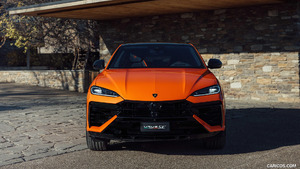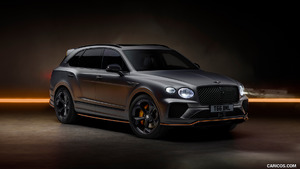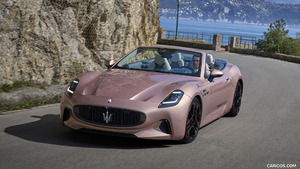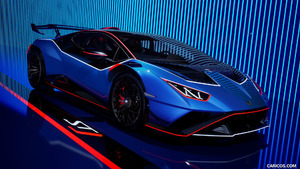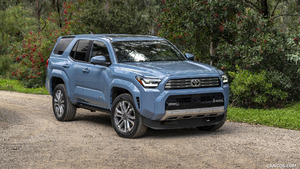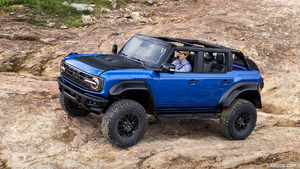VW Up! Lite Concept
TDI is shut off completely in many operating phases
The 0.8 TDI used in the Up! Lite is the most fuel-efficient engine of any four-seat passenger car in the world. The two cylinder engine with a displacement of exactly 800 cm3 drives the front axle, and its technology is based on the new 1.6-litre TDI (four cylinder) that is used in cars such as the Golf and Passat BlueMotion. Incidentally, a version of this 0.8-litre engine was shown in the L1 research vehicle last September at the IAA motor show in Frankfurt. In the Up! Lite, the quiet common rail engine develops a peak power of 38 kW / 51 PS (at 4,000 rpm). Between 1,800 and 2,250 rpm the 55 kilogram light turbo-diesel direct injection engine delivers 120 Newton-meter maximum torque. Anyone wishing to benefit from the car's full savings potential and attain a combined fuel consumption value of 2.44 liters (70 mpg/highway) will want to press the "Eco" button, activating an operating mode that reduces the engine's power output to 26 kW / 36 PS. The 0.8 TDI is coupled to the so-called pulse start module – an electric motor that is integrated on a driveshaft between the TDI and the 7-speed DSG.
Since they share a common construction as an engine family, the 0.8 TDI and the 1.6 TDI have an identical cylinder spacing (88 millimeters), identical bore (79.5 millimeters) and stroke (80.5 millimeters). In addition, these TDI engines share important internal engine details for reducing emissions. They include special piston recesses, multiple injection and special tuning of the individual injection jets. In both cases, the technical package includes exhaust gas recirculation, oxidation catalytic converter and diesel particulate filter. Both TDIs exhibit especially quiet and low-vibration operation thanks to common rail injection. The aluminium crankcase was also built with a high degree of form precision, resulting in very low friction losses.
Moreover, the Volkswagen is equipped with a Stop-Start system. As soon as the Up! Lite is stopped and the brake is applied, the engine automatically shuts off. Just release the brake pedal and the pulse start module puts the TDI back in motion.
Electric versatility – the pulse start module
The pulse start module of the Up! Lite that is integrated on the driveshaft between the TDI and the gearbox is truly multi-talented, because the electronically controlled generator performs several different jobs. Number one: The E-Motor works as a starter for the TDI. Number two: It acts as an alternator to generate electrical power. It is driven by the engine or by storing kinetic energy in regenerative braking. Number three: In phases of greater acceleration or to simply handle the approach to a hill, the 10 kW pulse start module boosts the TDI like a classic E-motor with a torque of up to 70 Newton-meter. This results in significantly improved dynamic response. Number four: pure electric driving. A separate power electronics unit manages the high voltage energy flowing from and to the battery and to the E-Motor. Over a distance of up to two kilometers, e.g. in residential areas, the E-Motor can independently propel the Up! Lite emissions-free. To cover longer distances, a larger lithium-ion battery would be required, but this would increase weight and result in fuel consumption higher than 2.44 liters (70 mpg/highway).
The fuel tank was also kept very small to reduce weight. Its capacity is only 20 liters. Nonetheless, thanks to the car's low fuel consumption, large ranges of more than 800 kilometers (over 500 miles) are still attainable.
Coast-down and regenerative braking – utilizing kinetic energy
It is exciting to look at those operating phases of the Up! Lite, in which it is driven without load demand – that is, when the forward-looking driver takes his or her foot off the gas pedal and lets the front-wheel drive car coast. In this case, the system automatically de-clutches the TDI and switches it off to better utilize the vehicle's kinetic energy. The small Volkswagen is now just propelled by its own mass, set into motion beforehand, together with the supporting E-motor. It coasts silently on the asphalt without fuel consumption or emissions. As soon as the driver lightly presses the brake, the E-motor recovers the kinetic energy, storing it in the lithium-ion battery. If the driver presses the brake pedal harder, the Up! Lite is decelerated as usual. The TDI itself does not start up until more power is demanded than the E-motor can deliver; then as a starter it immediately puts the TDI back into play.
Clever navigation system favors coasting phases
From the navigation system with its intuitive touchscreen controls, it is also possible to select the most energy-saving route in "Eco" mode before heading out on a trip. In this mode, the system considers additional parameters such as the topography in route computation, making it theoretically possible to maximize benefits of coast-down phases, the time of day and traffic conditions. The fact is: After just a short practice period the driver is able to adapt his or her driving style by integrating longer coast-down stretches and intuitively releasing the gas pedal – e.g. when entering towns or on freeway exits.
Body Concept + Dimensions
Roof made of carbon fiber composite weighs just 3.3 kilograms
The Up! Lite that Volkswagen is presenting in Los Angeles is the fifth concept vehicle of a completely new car line – the New Small Family. The Up! (three-door), Space Up! (five-door), Space Up! Blue (five-door with fuel cell) and finally the E-Up! (three-door with E-drive) concept cars have formed a design language with an unmistakable character and the contemporary Volkswagen Design-DNA developed by Walter de Silva. The Up! Lite is the most aerodynamic of any of the New Small Family concept cars. Like the E-Up! that was presented in Frankfurt, the version debuting in Los Angeles also offers a preview of the production design.
Added length for better aerodynamics
The 3.84 meter long, 1.40 meter tall and 1.60 meter wide Up! Lite makes a futuristic, bold and – in its form – very independent appearance. Its wheelbase is 2.45 meters. Compared to the three-door Up! it is lower in profile, and to satisfy even higher aerodynamic demands it is also longer. The Up! Lite is nearly as long as the Polo (3.98 meters). The frontal area of the narrow concept is conspicuously small, measuring 1.82 m2, and its Cd value is 0.237 (Cd x A = 0.43). The air has little to resist on this Volkswagen. And that has a direct impact in reducing energy consumption.
The aerodynamic body design was streamlined in all areas. For example, all of the windows interface with the body in such a way that they are absolutely flush. Edges and recesses are simply not to be found on this car. Even the radiator air inlet at the front end is only opened when needed to regulate engine temperature ("active thermal management"). Just how uncompromisingly the new Volkswagen's shape was tuned in the wind tunnel is demonstrated by a look toward its outside mirrors: there are none. Instead, there are two side cameras at the tips of small winglets, and a camera at the rear end in the roof edge spoiler that handle this job and transmit their images to the rearview mirror of the future: a central display in the roofliner console (for its mode of operation, see section "Interior concept").
Styling as a statement on the future
The styling itself portrays a compact vehicle that genuinely reflects its sustainable drive system and overall progressive concept. Form and function enter into an extraordinary coexistence here, similar to the phone that begins with "i".
It is the facets of a high-class design culture that make the Up! Lite, painted in "Liquid Blue Metallic", so extraordinary. At the rear, for example, the concept car has the appearance of a hatchback sports car. As a result, the broad shoulder section is definitely reminiscent of the Scirocco, but also of the L1 concept car presented at the most recent IAA in Frankfurt. In addition, the look of the lower area is dominated by the large glass surface of the hatch, the LED rear lights and the c-shaped rear fog lights integrated in the bumper in typical Up! style.
The counterparts of these lights are found in the front bumper as front fog lights. Parking and daytime running lights of the unmistakable light housings are presented in LED technology here too. The sharp lines of the headlights are visually connected via a chrome strip with VW logo integrated at its centre. The engine hood is distinctly wide and can be put in a service position from inside the car. It moves several centimeters forward, offering access to the windshield washer fluid, motor oil and radiator coolant.
The car's side profile also has clean styling with markedly smooth surfaces. There are no edges except for the upper tornado line, the wheel wells and a connection line integrated there. Recessed in small cut-outs and away from wind blasts, the door handles are styled practically, oriented in the pulling direction. The bands of side windows are narrow, extended and rise toward the rear, as on the Scirocco. However, they exhibit fully independent lines in their rear sections here.
Incorporated into styling of the car's side profile is the design of its alloy wheels. In a potential production version, Volkswagen favors a 16-inch format with low-resistance 155/60 R16 tires here. Yet, even larger wheels are conceivable, as demonstrated by the concept car being presented in Los Angeles; the 18-inch wheels (155/50 R18 tires) used here are made of a lightweight metal and a total of ten carbon fiber spokes (!).
Pioneering lightweight construction
The sensationally low combined fuel consumption of 2.44 l/100 km (70 mpg/highway) would not have been feasible without significantly minimizing vehicle weight. Therefore, the Up! Lite design team reviewed practically every component of the study for potential weight savings. And with success, as born out by its curb weight of just 695 kilograms.
The body of the Up! Lite primarily consists of high-strength steel and aluminium. Consider the platform: Here there is a body frame that is produced from hot-worked and therefore very rigid steels. This frame includes the side members, centre tunnel, seat frames, areas of the A-pillars and wheel housings. Components made of lightweight aluminium include the floors in the passenger compartment, the rear floor with spare wheel recess, engine compartment bulkhead, engine compartment, rear wheel housings and front windshield crossmember. The front bumper crossmember is produced from carbon fiber composite.
The upper section of the body-in-white, the so-called "Hat", is almost entirely made of aluminium. Only the interior components of the B-pillars and roof rail (lateral front) are made of high-strength steel. The exterior covers on the bumpers are made of plastic as usual. A highlight of lightweight construction is the 1.7 square meter roof of the concept car. It is "baked" from an exceptionally stable carbon fiber composite and weighs just 3.3 kilograms. By comparison: The identical panel size in steel would weigh about 9.5 kilograms, and an aluminium roof of this size would come in at a very light 5.1 kilograms. That is why aluminium is the material used in all other components, including the doors, hood and rear hatch.
Interior Concept + Dimensions
Interior of the Up! Lite impresses with pure functionality and everyday practicality
The concept car being presented in Los Angeles offers space for four adults plus luggage in its comfortable interior. In terms of its length, the space it offers is comparable to that of the new Polo. The interior height is 985 millimeters in front, and 926 in the rear. Even in the rear seating area there is sufficient headroom for passengers up to 1.85 meters tall. However, compared to the Polo the Up! Lite has a narrower width to minimize its frontal area. There is 217 liters of cargo capacity (up to seatback height) in the boot in its normal configuration (four persons on board). When the rear bench seatback is completely folded down, cargo capacity increases to 847 liters (loaded to ceiling height).
To keep the interior cool on hot days, even while it is parked, the Up! Lite is equipped with a "passive park ventilation" feature. This system exploits the fact that hot air rises. Unlike practically all other cars, the air is not vented in the area of the C-pillars or wheel housings, rather by chimney effect – much higher – directly through an opening between the end of the roof and the roof edge spoiler and tailgate.
Interactive and intuitive controls
Instrumentation was reduced to absolute essentials with carbon-look instruments. The goal here: climb in, buckle up and drive away – without having to study an operating manual. To the left of the steering wheel are pushbuttons for lighting functions, and to the right the start button for the engine/E-motor, and that is about it. All other information and vehicle functions are accessed intuitively via displays. The reasoning here: Showing information on a display has become commonplace in everyday personal and business life. Increasingly, these display screens are also handling key information in the automobile. And that is good, because their presentation can be adapted to people better than is possible on any classic instrument.
In the Up! Lite three of these displays are used to control nearly all vehicle functions and display information. A seven inch monitor serves as a central instrument in front of the driver. Displayed here are momentary powertrain states (TDI, E-motor, etc.), vehicle speed (digital display and as horizontal "banded speedometer"), the currently engaged gear, basics such as clock time, outside temperature and trip odometer as well as any warning indicators.
On the centre console, meanwhile, a 5.7-inch touchscreen provides an interface for the climate control system, communication with the outside world (phone) and the infotainment field (MP3, video, Internet). Thanks to a hand movement sensor, user control is also intuitive like on the most successful multimedia Internet cell phone of contemporary times.
It was even possible to integrate user control of the 7-speed DSG in this concept from ergonomic perspectives. The classic gearshift knob was simply eliminated in the Up! Lite Instead, there is a manual control ball that feels like a large computer mouse. The specific gearbox function is simply activated by moving this "mouse" forward and backward. In parallel, the soft upholstered surface of the ball – also with a carbon look – can be used to access the touchscreen on the centre console, conveniently and precisely.
The camera system of the Up! Lite
Instead of the classic inside rearview mirror and two outside mirrors, the 2L-Up has one rear camera and two side cameras (in the roof edge spoiler and at the height of the former outside mirrors). Images from the three cameras are transmitted to the car's third display is intuitively placed in the driver's visual field in the vicinity of the previous rearview mirror. During freeway and highway drives, the rear camera image is shown on the widescreen display with a previously unheard of width/height ratio of 8:3. It acquires the entire relevant area behind the vehicle. When the driver activates a turn signal, the image of the camera on the same side as the turn signal light is also shown in the display.
In the city, and for slower drivers, the rear camera image is generally shown in the central display together with images from the side cameras. This gives the driver an optimal visual representation of the car's surroundings, and indeed without a blind spot. The same images are shown when driving in reverse. In this case, however, the rear camera image is enlarged, and the images of the side cameras are reduced in size. This display solution is superior to conventional outside mirrors, because it offers a comprehensive visual display of the surroundings.
Seating comfort and variability of a new dimension
In front, the concept car is equipped with ergonomically perfected bucket seats, manufactured in lightweight construction. The entire interior, including the seating system, exhibits a high level of functionality. Access to the rear seats is made easier by such features as a new type of Easy-Entry feature on the front seats. Simply pull on a loop at the outer edge of the seat, and it slides exceptionally far forward and even tips slightly in the direction of the instrument cluster, and this creates an opening that is spacious for a four-door car.
Another logical solution: The seat height is automatically adjusted in tandem with longitudinal adjustments to the driver and front passenger seats. This basic functionality is not new, but the way it has been implemented here surpasses all previously known systems. It makes separate height adjustment unnecessary. The seat shells of the front seats are designed as a single unit, and so they are fully adjusted in seat angle; this also works impressively. All seats are upholstered with a Titan Black, neoprene-like yet breathable fabric. This high-end material – in black and orange – can also be found in the door trim panels and floor areas. Interior accents are in "Piano Paint" and "Galvano Silver".
Seatbacks are unlatched via head restraints
Finally, there are simple, self-explanatory control mechanisms that are a common thread unifying the concept car's interior. The best example: The newly designed unlatching mechanism for folding down the rear seatback. Volkswagen calls this concept "Easy Switch": Simply push the head restraints forward and the seatback unlatches. When the seatback is stowed in this way, it produces a level cargo surface with integrated tie-down eyes. This is for certain: It is a Volkswagen that will remain a perfect companion well into the future. Climb in, buckle up and drive away, just like on the legendary Beetle of an earlier era...

